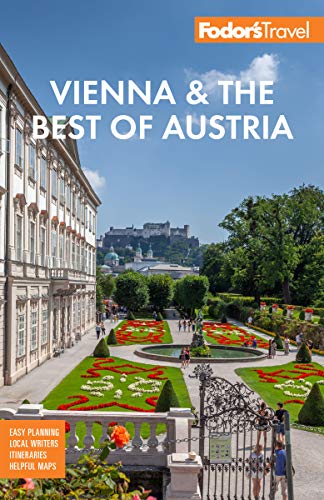Vienna's Modern Architecture
Early one day in 1911, Emperor Franz Josef started out on a morning drive from the Hofburg, when he was stunned to come upon the defiantly plain Looshaus, constructed just opposite the Michaelerplatz entrance to the imperial palace. Never again, it was said, did the royal carriage use the route, so offensive was this modernist building to His Imperial Highness. One can only imagine the emperor’s reaction to the Haas-Haus, built in 1985 on Stephansplatz. Here, across from the Gothic cathedral of St. Stephen's, famed architect Hans Hollein designed a complex whose elegant curved surfaces and reflecting glass interact beautifully with its environment. The architecture proved an intelligent alternative to the demands of historicism on the one hand and aggressive modernism on the other.
This balancing act has always been a particular challenge in Vienna. For a few critics, the Gaudíesque eccentricities of the late Friedensreich Hundertwasser did the trick (besides the Kunsthaus museum he is also responsible for the multicolor, golden-globe-top central heating tower that has become almost as much a part of the skyline as St. Stephen's spire). But for all their charm, they have now been overshadowed by the Viennese modernism of today. By far the most exciting urban undertaking has to be the Spittelau Viaducts, just across from the Hundertwasser power plant. This revitalization plan for the Wiener Gürtel, perhaps Vienna's busiest thoroughfare, includes public-housing apartments, offices, and artists' studios that interact with the arched bays of the viaduct, a landmarked structure built by Otto Wagner. Responsible for the staggering three-part complex, partly perched on stilts, is star architect Zaha Hadid. A pedestrian and bicycle bridge connects the whole project to the University of Business, the North Railway Station, and the Danube Canal.
A discreet example of Vienna's new architecture is the vast MuseumsQuartier. Hidden behind the Baroque facade of the former imperial stables, the design by Laurids and Manfred Ortner uses its enclosed space to set up a counterpoint between Fischer von Erlach's riding school and the imposing new structures built to house the Leopold Museum and the Modern Art Museum. From the first, old and new collide: to enter the complex's Halle E + G, you pass below the Emperor's Loge, whose double-headed imperial eagles now form a striking contrast to a silver-hue steel double staircase. Other important projects—notably the underground Jewish history museum on Judenplatz (look for a stark cube memorial by English sculptor Rachel Whiteread); the Gasometer complex, a planned community recycled from the immense brick drums of 19th-century gasworks; the ellipse-shape Uniqa Tower on the Danube Canal designed by Heinz Neumann, and the ecologically responsible Donau City—are among the architectural highlights on tours now organized by the Architecture Center (AZW) of the MuseumsQuartier; its maps and brochures can be used for self-guided tours.




